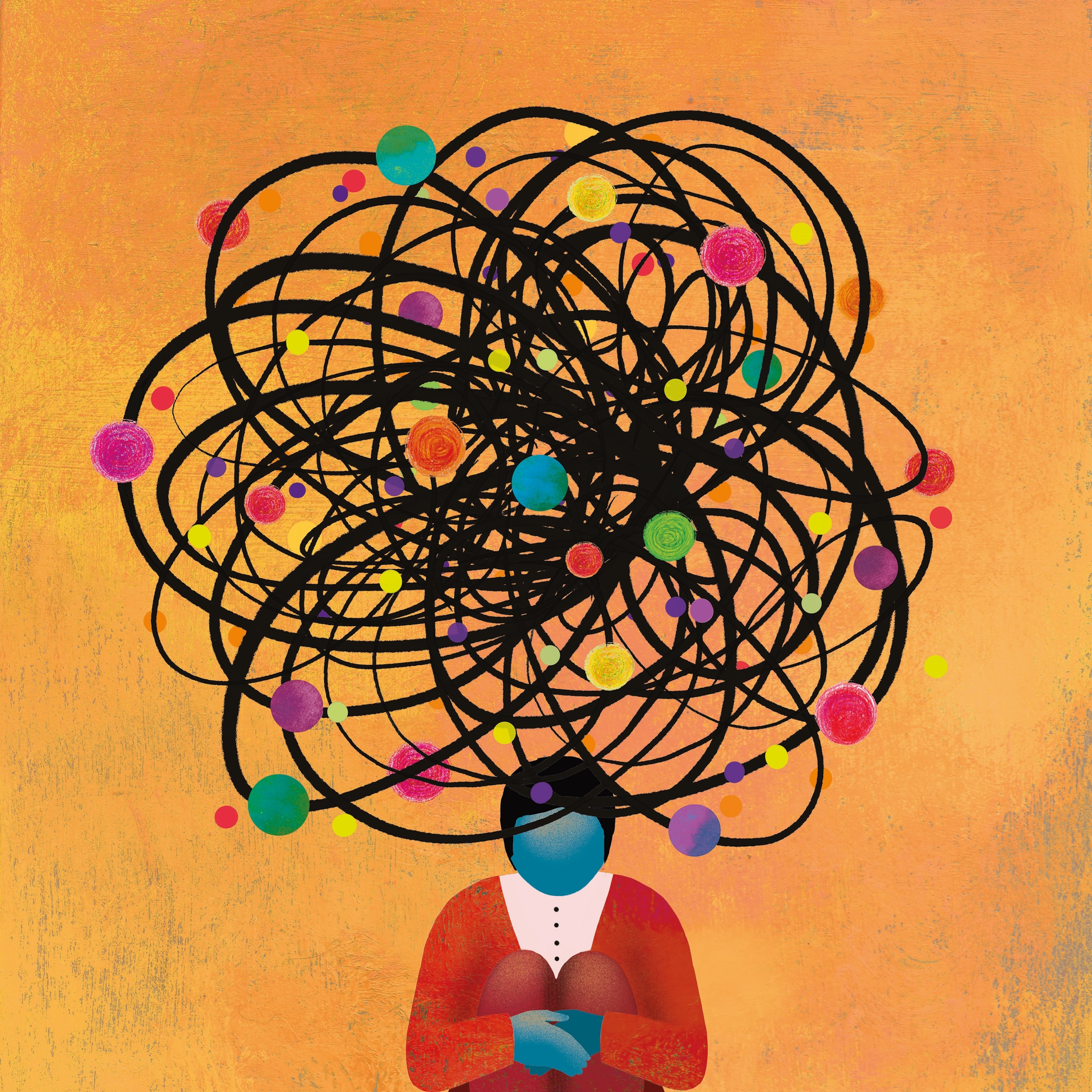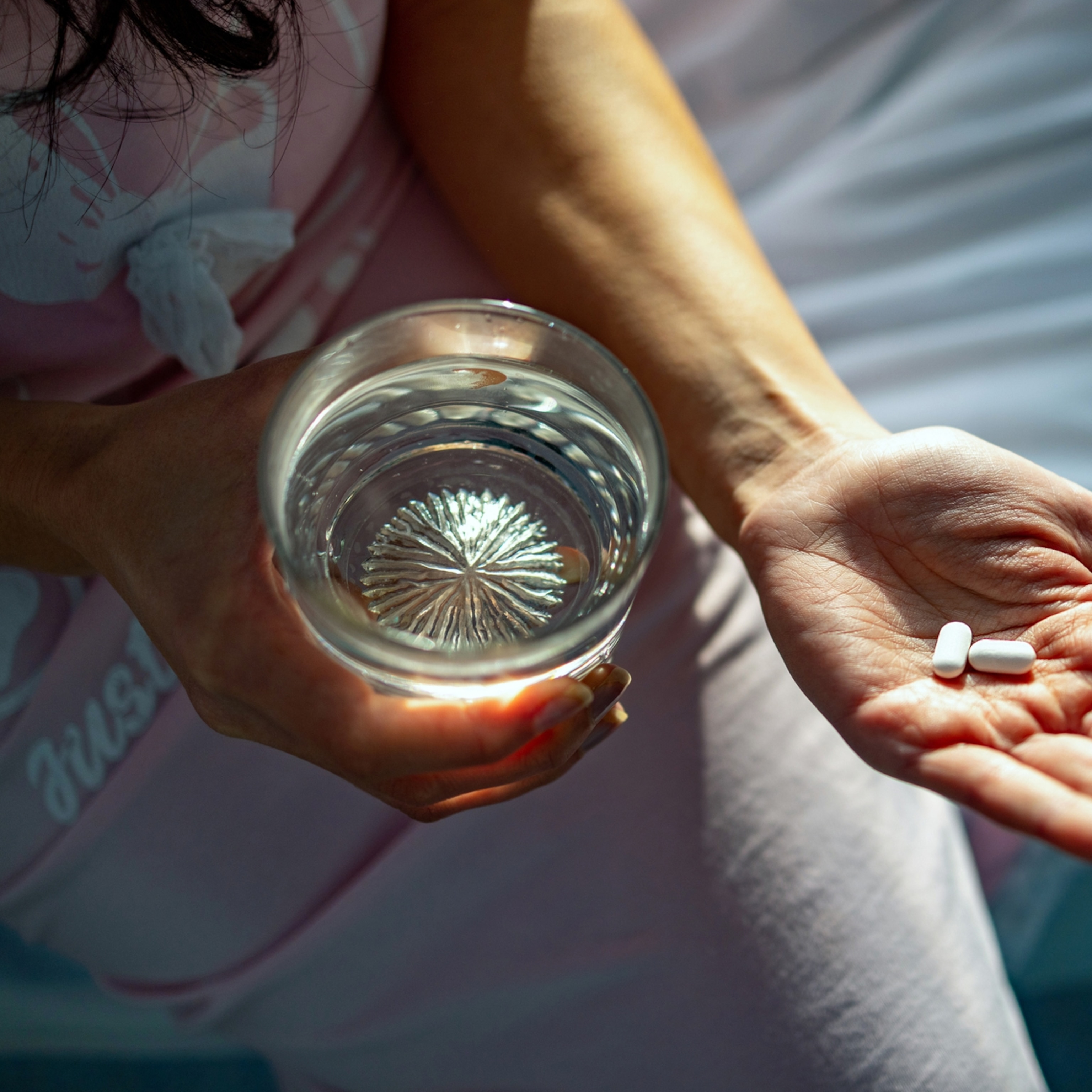
A partial solution for migraines and PTSD? This approach offers hope.
From drug-resistant depression to migraines and stroke recovery to various types of inflammation, vagus nerve stimulation—electrical stimulation of nerves in the neck—is being tested as a treatment for dozens of conditions.
In the brave new world of bioelectronic medicine, mounting evidence suggests that stimulating the brain by sending mild pulses of electrical energy through the vagus nerve in the neck may help relieve symptoms of post-traumatic stress disorder, which is notoriously difficult to treat.
('Shell Shock'—The 100-Year Mystery May Now Be Solved)
Unlike some vagus nerve stimulation (VNS) devices that are surgically implanted, transcutaneous VNS (tcVNS), which is used for PTSD, is noninvasive and painless: the device is simply held against the side of the neck, or the ear, and electrical stimulation is delivered through the skin. Already, the clinical trial results have been so promising that in 2022, the U.S. Food and Drug Administration granted gammaCore—a non-invasive, handheld vagus nerve stimulator—designation as “a breakthrough device” for the treatment of PTSD; it is already used for the treatment of cluster and migraine headaches.
“Breakthrough” designation isn’t the same as full FDA approval. It means the agency will prioritize eventual approval “because they’ve looked at the studies and said this looks promising,” says J. Douglas Bremner, a psychiatrist and nuclear medicine physician at the Emory University School of Medicine in Atlanta whose studies led to the breakthrough designation for gammaCore’s use for PTSD. “It’s exciting because it’s a whole new class of treatment.”
Researchers at the Feinstein Institutes for Medical Research in Manhasset, New York, are currently conducting a clinical trial to test an auricular (ear) VNS device for PTSD in 9/11 first responders at the World Trade Center. “We are still seeing a significant number of people struggling with PTSD from the events of 9/11,” says Rebecca Schwartz, a clinical research psychologist and associate professor at the Feinstein Institutes. “The feedback that we’ve gotten so far is that the [device] is really easy to use.”
VNS is likely to be most useful as an add-on treatment, experts say. Exposure therapy—in which psychologists create a safe environment in which to expose people with PTSD to things they fear and avoid to reduce these responses over time—“is the gold standard for treating PTSD but it doesn’t work for everyone,” says Christa McIntyre, a neuroscientist at the School of Behavioral and Brain Sciences at the University of Texas at Dallas. And some people with PTSD don’t want to do exposure therapy, which tends to be very intense.
“There’s a lot of hope on the horizon for the use of VNS for PTSD but more research needs to be done,” says McIntyre.
How vagus nerve stimulation works
The vagus nerve helps regulate digestion, heart rate, respiration as well as vasomotor activity and certain reflexive actions like sneezing or coughing.
Vagus nerve stimulation was initially approved in 1997 as an adjunct therapy for drug-resistant epilepsy. Since then, the Food and Drug Administration has approved it to treat drug-resistant depression, cluster headache, migraine, and stroke recovery. It is also being investigated as a treatment for other neurologic and inflammatory conditions.
There are two vagus nerves, one on the left and one on the right side of the neck. They are part of the parasympathetic nervous system, often called the “rest and digest” system because it helps the body relax after periods of stress, or danger, and regulates bodily functions such as digestion and heart rate. The vagus nerves also serve as a bridge between the brain and peripheral organs and play a crucial role in memory, emotion, and pain, among other bodily functions.
In PTSD, the sympathetic nervous system, which is responsible for the fight-or-flight response, becomes chronically overactivated, explains Bremner. Also, “in PTSD, when people experience stress, they have an exaggerated release of inflammatory markers, especially cytokines which go into the brain and have behavioral effects.”
A study in a 2022 issue of Molecular Psychiatry found that other inflammatory markers—namely, C-reactive protein, interleukin 6, and tumor necrosis factor—were also significantly increased in people with PTSD, compared to people without the disorder.
Stimulating the vagus nerve with electrical pulses activates the parasympathetic nervous system, which then “blocks the sympathetic [nervous system] response, reducing heart rate, respiration rate, and blood pressure, and the inflammatory response to stress that occurs with PTSD,” Bremner notes. Indeed, a study in a 2020 issue of the journal Neurobiology of Stress found that using tcVNS calms the overactivity of the sympathetic nervous system that occurs during traumatic memories and mental stress in people with PTSD.
One study, published in a 2021 issue of the Journal of Affective Disorders Reports, found that when people with PTSD used tcVNS for three months, they experienced 31 percent fewer symptoms compared to sham treatment; they also experienced less inflammation when responding to stress. A study in a 2020 issue of the journal Brain Stimulation found that using VNS alleviated trauma symptoms and reactivity in limbic and other brain areas that are involved in stress in people who had a history of psychological trauma while they listened to personalized, emotionally stressful scripts describing traumatic situations, as measured with positron emission tomography (PET scans).
A confounding condition
Among mental health conditions, PTSD is particularly difficult to treat for several reasons. For one thing, the disorder has myriad symptoms that fall into four broad categories and it’s often hard to find a single treatment that addresses all of them: Intrusive thoughts or flashbacks; avoidance of people, places, and things that remind the person of the traumatic event; distorted or paranoid thoughts and more negative feelings; hyper-arousal and hyper-reactivity, such as being easily startled or having trouble sleeping.
Another challenge is that PTSD is a response to trauma, which can reprogram the way an individual’s nervous system functions in ways that become entrenched, says Valentina Stoycheva, a psychologist and owner and director of STEPS (Stress & Trauma Evaluation and Psychological Services) in New York City. “In PTSD, the sympathetic nervous system and the parasympathetic nervous system become imbalanced in favor of creating a state of hyperactivation and hypervigilance or a shutdown in the midst of events that cause overstimulation.”
In these instances, the parasympathetic nervous system, which normally puts the brakes on sympathetic nervous system activity, can’t help the person calm down. As a result, someone who has PTSD may “no longer respond appropriately to their environment—they may perceive innocuous stimuli as highly dangerous or have blunted emotions in moments that call for more intense affect,” Stoycheva explains. “Many trauma survivors report overreacting or going zero to 100 in their experience of anxiety or anger, even if the trigger is disproportionately small to their reaction.” Getting a grip on that aspect of PTSD is challenging, experts say.
Trauma can come from many different sources, and experts say that transcutaneous VNS could be used effectively by people who have PTSD from a variety of traumatic events, including combat, auto accidents, being a crime victim, or childhood abuse, among others.
With the ear device, “the side effects are almost non-existent,” says Theo Zanos, a bioelectronic medicine researcher and associate professor at the Feinstein Institutes. “It’s almost like putting an ear pod in your ear— you don’t feel it,” Schwartz adds. By contrast, the transcutaneous device that’s pressed against the neck can potentially cause temporary hoarseness when the stimulator is firing.
Unfortunately, at this point, most insurance plans aren’t paying for hand-held devices such as gammaCore for the treatment of PTSD, says Bremner. But “in the VA, we’re able to prescribe it for PTSD.”
A step in the right direction
It’s unlikely that VNS can relieve all the symptoms that are associated with PTSD and it’s not viewed as a potential cure. It’s most likely to help with symptoms of hyper-arousal, hyper-vigilance, heightened anxiety, and insomnia, experts say. A study in the April 2023 issue of the Journal of Sleep Research found that using tcVNS for an hour after turning out the lights at bedtime resulted in improved sleep depth and stability in veterans with PTSD.
And people with autonomic anxiety symptoms—related to the fight-or-flight response—such as upset stomach, nausea, abdominal pain, a rapid heart rate, or dry mouth would be good candidates for VNS, Bremner says.
It also may help reverse conditioned fear responses. In a study in a 2019 issue of the journal Stress, McIntyre and colleagues used Pavlovian fear conditioning—by playing a sound then delivering a foot shock to rats, which elicited freezing, a behavioral sign of fear: They found that using VNS enhanced extinction of the conditioned fear and reduced anxiety in rats with PTSD.
“VNS can be used as an adjunct to exposure therapy— we think that using VNS during exposure therapy could help people tap into trauma memories and enhance storage of new memories,” McIntyre explains.
It’s also not a replacement for medication. “We don’t take people off medications for PTSD—we add tcVNS,” explains Bremner, a professor of psychiatry and radiology at the Emory University School of Medicine. “The medications for treatment of PTSD are limited, and not all medication treatments are fully effective.” In his work at the Atlanta Veterans Clinic, Bremner says there are rooms full of people who are taking medications and not getting relief from PTSD.
The hope is that with vagus nerve stimulation, someone who has PTSD may be able to return to a calmer, more regulated emotional state that would allow them to address other symptoms through therapy or perhaps have a better response to medication.
“Wherever you stimulate the vagus nerve, it’s having beneficial effects,” says Bremner. “VNS also promotes cognition and memory function and reduces withdrawal symptoms in people who are addicted to opioids. I think this could make a big difference for people with PTSD.”








